#siddhanta
Explore tagged Tumblr posts
Text

i have been exploring the algorithm of the Mahāvidyā Kamalātmikā through sound pathway as facilitated by the AshZero offering of "Sounds of Śakti" for which @lensonearth created a series of sounds distilled from bījā mantra. the sounds are not chants nor articulated resonance; instead, they are what we see as a container through which sound is projected as shape. this model of absorption is a near non-linear oral transmutation which aims to follow the siddhānta (algorithm) of ṛṣi darśanāta (to understand more, watch "Vedas: All You Wanted to Know" by Dr. Kesarkar which expounds on how the Vedas originated from sound: https://youtu.be/mK6KdrmyOcg?si=t7vuad5g9kiLXCyF).
after experimenting with various abstract sound combinations for a week, i began continuously looping through one particular waveform.
with the awareness that it is in our humanness to prefer what is amiable and to make choices (such as that of which sound to absorb) based on what resonates with our sense projections, i aimed to renounce any bias and to absorb the sound for 3 weeks without expectations, familiarity or target. i listened to it in the morning and in the evening, 4 times each round.
gradually, the sound became integrated in my system; i became able to access it spontaneously, in the sensory exchanges occurring in my regular days. i noticed change in my perception of the events arising in my life as well as in my actions. as instructed, i aimed to avoid the natural urge to linearly make sense of it or to differentiate positive and negative effects arising of this flow. thus, i will not pinpoint what exactly changed in my life through the means of this sound, nor do i think it would be feasible or fruitful, as it causes validation toward a process - which is not the aim of application-based Tantra.
however, as an exercise, i decided to jot down the unfolding of a sound exploration that transpired in my first night in Rishikesh without any rationale other than an opening to the process possibly unlocking something within without a specific subconscious target.
i'm not sharing this with the intention to construct a mystical halo. mystical / energetic experience is ultimately just an experience - it can greatly help us open or gain clarity, but it's important not to get caught up in it. the experience i am sharing simply demonstrates how sound can be absorbed by the system and nothing more, and has no inherent specialness.
as i sat by the Gaṅgā, the sound i have been imbibing spontaneously rang in my right ear at low volume. after a small dram of whisky taken as sacrament, the sound boomed in both of my ears. my heartbeat increased and various bodyparts, such as navel, feet and hands began pulsing. what i understand as "pleasure pathways" in my system fired. followingly, i directly listened to the sound with headphones, eyes open. after i finished listening, the sound overturned my thoughts and my experience became an immersion in the five senses (sight, touch etc).
sacrament choice: 6 y/o Highland Park independent bottle, 60.1%, which i got from Cadenhead's at a Whiskybaba.in immersion in summer - i'm not a fan of OB (original / official bottling) of Highland Park but their IB (independent bottling) i think is a must try.
#tantra#tantrika#sound#breath#sound breath#yoga#kamalatmika#mahavidya#mahavidyas#ashzero#the ash zero experience#whisky#india#rishikesh#whiskybaba#practice#siddhanta#algorithm
11 notes
·
View notes
Text

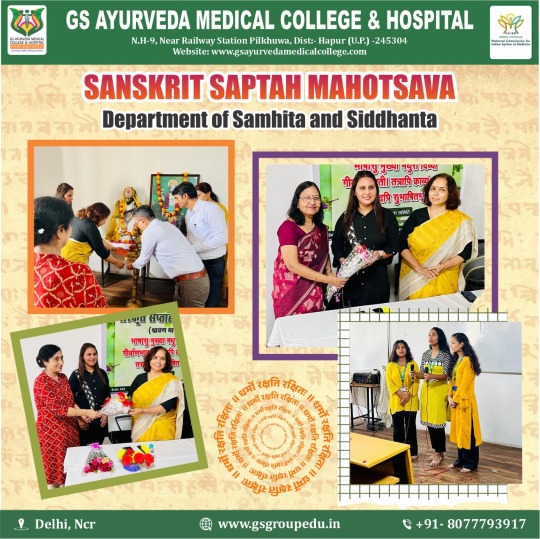
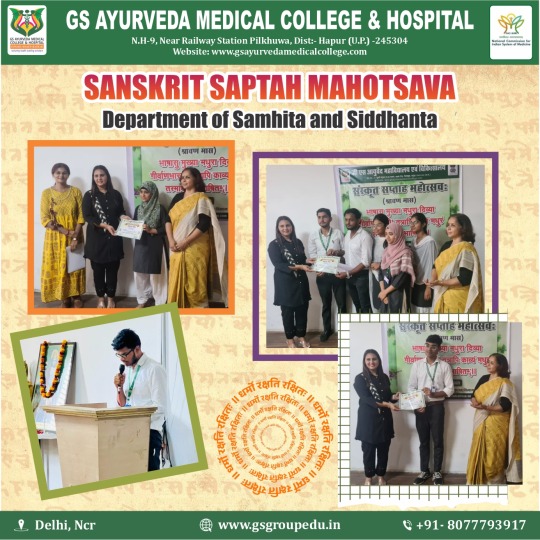

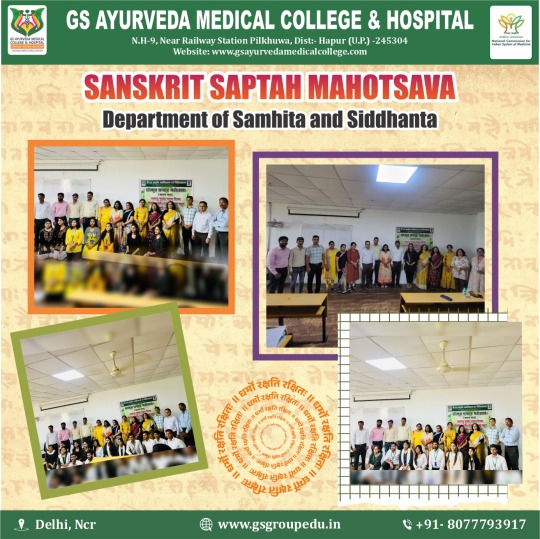
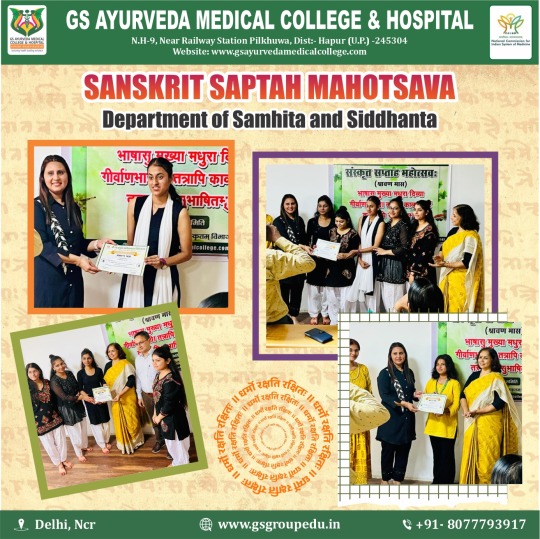
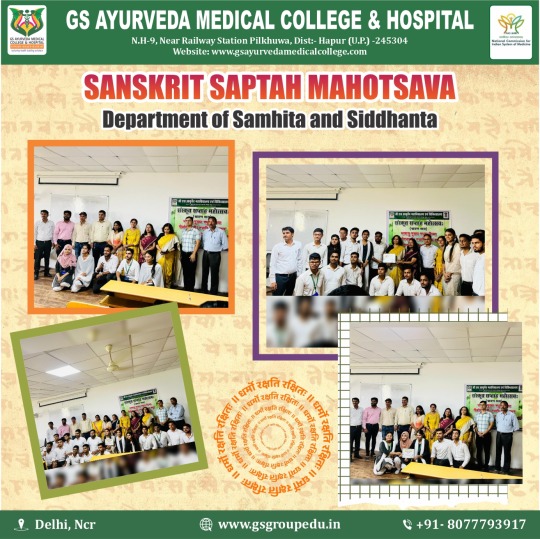
Department of Samhita and Siddhanta successfully Celebrated SANSKRIT SAPTAH MAHOTSAVA to spread awareness about our mother language and the importance of this holy language.
The celebration consisted Quiz Competition, Shloka Recitation Competition Shloka writting, Skit and followed by felicitation of students and Cultural programmes.
The event was graced by the presence of Honourble Director Mam, Mrs Sonali Sharma, Principal Mam, and all faculties.
Visit our Website: https://gsayurvedamedicalcollege.com/
#SanskritSaptah#Mahotsava#Samhita#Siddhanta#Successfully#GSAyurveda#GSGroup#DelhiNCR#UttarPradesh#India
0 notes
Photo

Common Hill Myna (Gracula religiosa)
© Siddhanta Kumar Mohanta
90 notes
·
View notes
Video
youtube
పునర్జన్మలు – జనన మరణ రహస్యం! | Reincarnation or Rebirth or Transmigration...
#youtube#పునర్జన్మలు#పునర్జన్మ#జనన మరణ రహస్యం#reincarnation#rebirth#transmigration#ఆత్మ#mplanetleaf#voice of maheedhar#maheedhars planet leaf#garuda#garuda purana#garuda puran#garuda puranam#kathopanishad#karma#karma sinddhantam#karma siddhanta
0 notes
Text
Nepal Ved Vidyashram Sanskrit MaVi Vacancy 2080
Nepal Ved Vidyashram Sanskrit MaVi Vacancy 2080. Nepal Ved Vidyashram Sanskrit Secondary School, Vankali, Gaushala, Kathmandu is looking for Teacher in following Subject/Level. Interested and eligible candidates can apply by 17 Asar 2081. CAREEER OPPORTUNITY (First Published Date: 2081/03/02) Nepal Ved Vidyashram Sanskrit MaVi Vacancy 2080 Nepal Ved Vidyashram Sanskrit Secondary School,…

View On WordPress
#Job Vacancy#jobs in kathmandu#Jobs In Nepal#Nepal Ved Vidyashram Sanskrit MaVi Vacancy 2080#Sanskrit Grammar Subject Teacher#School Jobs#Siddhanta Astrology Teacher#Teaching jobs
0 notes
Text
An evil person is dying? Wow, hold my Monster Energy while I appropriate dharmic religions about it (I vote Dem/Lab so it's okay for me to do this)
#you literally have a god who - in interpretations that are statistically likely to be the only ones you were exposed to as a child -#punishers evildoers eternally in the afterlife and can also mete out that punishment in the mortal world if he so chooses#you don't need to say that this is in keeping with what the Buddha taught or what Oriental Mystics Say About Saiva Siddhanta#(btw. it very much is not)#and that's not even getting into how fucked up it is to say 'people get sick because they're evil'#literally Westboro Baptist Church-level worldview
0 notes
Text
The following is an excerpt from "The Nakshatras of Vedic Astrology: Ancient & Contemporary Usage" by vedic astrologers Dennis M. Harness and Marie M. Masco — here's a link to the full text
⠄・ ⋆ ・ ⠄⠂⋆ ・ ⠄⠂⋆ ・ ⠄
“In these twenty-eight mansions do lye hid many secrets of the wisdom of the ancients by which they wrought wonders on all things which are under the circle of the Moon”. Cornelius Agrippa- Alchemist/Magician (1500 CE)”
Historical Origins of the Lunar Mansions
Before the ecliptic was divided into the twelve zodiac signs, the ancient Indian astronomers recognized 27 divisions called nakshatras. The primary usage of the nakshatras is a fundamental difference between Western and Vedic astrology. One must deeply encounter and explore the nakshatras to appreciate the diversity and richness of Vedic astrology.
The Moon takes about 27.3 days to complete its sojourn around the ecliptic. The nakshatras represent the average daily movement of the Moon against the fixed stars. Each daily segment is identified by a small constellation or a single star. Originally the length of each nakshatra varied, but by the time the Surya Siddhanta was written (c. 500 CE), a classical astronomy text, the segments were fixed to a length of 13 degrees 20 minutes of arc.
The Sanskrit term nakshatra translates as “that which does not decay” (na – not and kshatra – destructible). Naksh can also indicate approaching, to worship, to guard or protect. Tra is a suffix implying a tool or instrument. Thus, the nakshatras are themselves a means of worship.
⠄・ ⋆ ・ ⠄⠂⋆ ・ ⠄⠂⋆ ・ ⠄
The Rig Veda is a compilation of hymns to the gods and the first known composition in an Indo-European language. Historians agree that the Rig Veda was originally transmitted through an oral tradition, and that it was written down, or codified, no later than 1500 BCE. Several nakshatras are mentioned by name in the Rig Veda. New academic research by Dr. David Frawley and B.N. Narahari Acher suggests that all of the nakshatras are to be found in the Rig Veda, where they are referenced by their associated deity.
The earliest reference to the complete solar zodiac based on 12 sign divisions is found in Mesopotamia c. 450 BCE, 4 yet the Indian astrologers were using the 27 divisions of the nakshatras far earlier. The original lists of the nakshatras always start with Krittika which is associated with the Pleiades. There has been much speculation about why the nakshatra order would start with what we now consider the third in the list. The earliest Indian star calendars were based on the 27 nakshatras, and some scholars believe that the nakshatra system was developed during the time when the vernal equinox occurred in the asterism of the Pleiades. The period when the Pleiades heliacally rose at the vernal equinox was 2720-1760 BCE.
⠄・ ⋆ ・ ⠄⠂⋆ ・ ⠄⠂⋆ ・ ⠄
Vedic Mythology and Spirituality: The mythological and spiritual depth of the nakshatra material and its applications are coming to fruition in the West. Exploring the rich mythology of the nakshatras offers both spiritual and psychological insight. According to the Taittiriya Brahmana 1.5.2, “One who offers worship here reaches the world of heaven beyond. That is the nakshatrahood of the nakshatras”. Thus, the nakshatras create a cosmic bridge between the human mind and the universal mind. They are the lunar mansions of the Vedic gods and goddesses, the celestial palaces of these divine beings. According to Dr. David Frawley, “the ancient Vedic sages looked to the origins of the human soul, the eternal or light part of our nature, in the heavens, among the stars, in the realms of light and eternity ruled by the creator or cosmic lord”. To the ancient seers, the nakshatras and planets in the sky were spiritual forces dispensing divine blessings on humanity. The heavenly lights reward us with the fruits of our karma according to our spiritual efforts made through worship, prayer and meditation.
Personality Analysis: The 27 nakshatras offer a deeper analysis of personality, character and temperament than the twelve zodiac signs. They reflect the most intimate aspects of one’s mental, emotional and spiritual nature. The nakshatras are an important tool for self-discovery.
31 notes
·
View notes
Text

Deathstroke (Redesign)
By Rishav Siddhanta
40 notes
·
View notes
Text

Om Namah Shivaya 🔱 Talon Abraxas
In Siddha Shaivism and Shaiva Siddhanta Shaivism traditions, Namah Shivaya is considered as Pancha Bodha Tatva of Lord Shiva and his universal oneness of five elements.
Na – Earth Mah – Water Shi – Fire Va – Air Ya – Sky or Ether
43 notes
·
View notes
Text
Intro to Tantric Shaivism: II - Kashmiri Shaivism
In my previous write-ups I explained what Tantra is and gave a brief introduction to Tantric Shaivism. In this write-up I’ll continue my exploration of Tantric Shaivism by introducing one of the most sophisticated traditions of Tantric Shaivism: Kashmiri Shaivism. I won’t talk about the sages who inspired these schools as I think that will make the essay way too long but instead focus on the main philosophy of each school within Kashmiri Shaivism. The three main active schools of thought within Tantric Shaivism today are Kashmiri Shaivism, Saiva siddhanta and Aghori.
Kashmiri Shaivism is also known as the Trika system. It is a monistic tradition but cannot be defined as one school of thought but rather a collective of different schools that originated in Kashmir, namely: Pratyabhijna, Kula, Spanda, and Krama schools.
It is known as the Trika system because they believe that the world contains three energies:
Para (transcendental) - para
Parapara (subtle) - sukshma
Apara (gross) - sthula
The right hand side of the names: sthula, sukshma and para are the names of these energies in the saiva siddhanta tradition.
Pratyabhijna
The word pratyabhijna means “to spontaneously once again recognize and realize your Self.” Here you have only to realize, you do not have to practice. There are no upayas (means) in the Pratyabhijna system. You must simply recognize who you are. This teaching, therefore, is situated chiefly in anupaya, which is that means where there are no means at all. It is the recognition that there was nothing to be done and nowhere to go. Here, there is no practice, no concentration and no meditation.
The purpose of Pratyabhijñā is the recognition of the Śiva nature of the world (and oneself). In order to achieve that, it is necessary to induce a modified state of consciousness through the use of Śakti. Śakti, loosely translated as energy, is the dynamic aspect of Śiva, the link between finite (the human subject) and infinite (Śiva). Thus comes about the fundamental principle: "Without the help of Śakti, pratyabhijñā is impossible”.
2. Kula
Abhinavagupta, one of the main Sages of this tradition, tells us that the term Kula is derivable from the root kul, which can mean a grouping together. From this meaning we can derive one of the meanings of Kula, a human grouping, namely a family, or more specifically a spiritual family that extends as far back as Siva himself. This lineage is unified by the sequential transmission of the achieved vision of the ultimate.
The Kula system teaches you how you can live in caitanya (universal Consciousness), the real nature of yourself, in the act of ascending and descending. While you rise from the lowest to the highest you realize your nature, and while you descend from the highest to the lowest you also realize your nature.
The difference between the Pratyabhijna system and the Kula system is, that the Pratyabhijna system teaches you how to realize your own nature in one place and exist there, reside there. While the Kula system teaches you how you can rise from the lowest degree to the highest degree, and all the while, experience the nature of your Self on the same level and state. Shiva, which is realized in prithvi tattva (earth element), is the same level, the same reality of Shiva which is realized in Shiva tattva. Here, there is complete realization in every act of the world.
3. Spanda
The word spanda means “movement.” The Spanda school recognizes that nothing can exist without movement. Where there is movement there is life, and where there is no movement that is lifelessness. Spanda is the vibration or the pulse of consciousness. Every activity in the universe, as well as every perception, notion, sensation or emotion in the microcosm, ebbs and flows as part of the universal rhythm of the one reality, which is Siva ,the one God who is the pure conscious agent and perceiver.
According to the Doctrine of Vibration, man can realise his true nature to be Siva by experiencing Spanda, the dynamic, recurrent and creative activity of the absolute. It is Spanda, the inscrutable pulse of consciousness, that moves and yet moves not, that changes and yet remains eternally itself, that ensures~that both manifestation and the absolute, its unmanifest source, form part of a single process which passes freely from one to the other in such a way that both poles are the same level and equally real.
The difference between the Pratyabhijna school and Spanda are that the spanda school emphasises on the recognition and experience of the vibration of consciousness while the former emphasises direct experience of Siva as oneself.
4. Krama
Krama system shows the development of Saktha tendencies in Saiva philosophy. Based on the Kālīkula (Kālī worship) branch of Tantric Śaivism, Krama means (‘sequence’) which internalized ritual worship of goddesses as the cyclical phases (krama) of one’s own awareness. The Krama system moves in space and time, but finally leads to Paramaśiva, who is beyond space and time.
Ritual came to be understood as an inner process of realisation through which the initiate discovered his/her essential identity with Kali, who is the flow (krama) of the power of consciousness through the polarities of subject, object and means of knowledge in consonance with their arising and falling away in each act of perception.
The experience of this process coupled with the arousing of man's spiritual potential (kundalini) and the expansion of consciousness that brings it about is the most esoteric practice of the Krama system of Kashmiri Saivism.
Kashmir Shaivism shares many parallel points of agreement with the lesser known monistic school of Shaiva Siddhanta as expressed in the Tirumantiram of Tirumular. This is a very brief introduction to the different schools of thought within Kashmiri Shaivism. It is important to recognise that these philosophies draw on each other as inspiration for their practices and contain less hard drawn lines. In the next piece I’ll talk about Saiva siddhanta.
P.S. As usual if you want the links to the resources I referenced, more than happy to send them your way.
#hinduism#hindu gods#religion#theology#tantra#spirituality#hindublr#lord shiva#shiva#desiblr#kashmir#kashmiri pandits
45 notes
·
View notes
Text

Art by Rishav Siddhanta
December’s Theme: #GothamCityCrime
Presented by CDQ Magazine
Discover the artists of the Character Design Challenge community and the current Theme of the Month in our Facebook Group! And when you repost your design on our Patreon page, you can also win awesome prizes every month and choose the future themes!
RULES | WINNERS | MAGAZINE | BOOKS
4 notes
·
View notes
Note
Hello! I hope you are well. I'm relatively new to vedic astrology. I was using lahiri from the beginning,but I keep seeing people talk about galactic mid center mula being more accurate. Ofc there's even more systems. Which one do you find to be the most accurate?
Hello Anon!
This is an excellent question. Actually, I've been using the Chitra Paksha ayanamsha so far because I like the idea of Spica being the starting point. Spica is Chitra's main star (yoga tara) and starts with 0° Libra according to Surya Siddhanta, a famous Sanskrit treatise about astronomy. Spica is a very bright star and it was used to determine the rashis/signs back then. It enlightens the darker stars of Aries opposite to it, hence its name of "paksha", that is used to describe the two waning and waxing phases of the Moon: it helps us see Aries constellation. Additionally, it's a powerful star as it represents gifts, knowledge and insights. Also, It is more accurate than the traditional Lahiri. It would be interesting to see what the galactic mid center Mula ayanamsha has to offer. Sooner or later, I will have a look at it 😉. My personal advice for you all is, when you must make a choice on any system in astrology, follow your guts. If you feel something is wrong in a system, let's say, an ayanamsha, then, don't use it. If you feel irritated about something in astrology, and you can't explain it, then, don't use this system even if you're told "it is the most scientifically accurate thing" and so on. We're all made differently, we don't think the same way. Astrology gives so many tools that you will find the tool personally made for you automatically. That's the treasure of astrology that you will never find in any other disciplines. And don't be scared about "inaccuracy" because when you feel 100% good in the tools you choose, then, you will give accurate results.
#astrology#vedic astrology#sidereal astrology#chitra paksha ayanamsha#ayanamsha#lahiri ayanamsha#lahiri#chitra paksha#advice#spica
6 notes
·
View notes
Text

Kapala du 19e siècle venant du Tibet. Utilisé lors des rituels des écoles du Tantrisme Hindou et du Bouddhisme Tantrique, le Kapala est en réalité une coupe faîte à partir d'un crâne humain et utilisé comme récipient. C'est un symbole des Kapalika, des ascètes shivaïtes errants.
Mais que sont les kapalika ? Les Ascètes de la branche Hindouisme du Shivaïsme ? Déjà, définissons ce qu’est un ascète. l’Ascète une personne qui pratique l’ascèse ou l'ascétisme, discipline volontaire du corps et de l’âme qui souhaite tendre vers la perfection. Le mot vient du grec “Askêsis” qui peut signifier en sois “Exercice” comme “Entraînement”. C’est ainsi en sois une pratique courante dans les religions, que ça soit le Christianisme, l’Islamisme, l’Hindouisme, le Bouddhisme, et même retrouvable dans la Franc-maçonnerie. Bien qu’aussi présent en Philosophie avec Platon, Xénophon, Kant ou Schopenhauer, l'ascétisme reste lié à la religion. Ainsi, un “Ascète” est une personne qui est dans sa religion, dévoué à une discipline physique comme psychique.
Maintenant, intéressons-nous aux Kapalika, ascète de l’Hindouisme Shivaïte. Mais d’abord, expliquons un peu le Shivaïsme. Basées sur les textes du Purana (Compilé par Vyasa, narrateur du Mahabharata), ces personnes considèrent Shiva, divinité Hindou comme la divinité d’élection tout en effectuant yogique (mouvement du Yoga) et discipline ascétique. Selon les historiens, cette pratique religieuse serait originaire du Cachemire tout en s’étendant en Inde au cours du 3e siècle. Aujourd’hui, il semble continuer dans le courant d'Aghori.
Un des temples les plus emblématiques du Shivaïsme est le temple de Dalavanur dans le District de Viluppuram de l'État de Tamil Nadu. Situé à 16 km de la ville de Gingee, ce temple date de l’époque de Pallava (225-888). C’est sous cette époque que le commerce maritime se développera et permettra ainsi une expansion des croyances Shivaïtes notamment dans l’Ouest, le Sud et le Sud-est de l’Inde.
Une des écoles du Shivaïsme est le Shaiva Siddhanta, originaire d’un groupe de 63 saints ayant vécu au VIe siècle. Ses saints sont nommés les Nayanar ou Nayanmar et vivent dans l'État du Tamil Nadu. Leurs doctrines sont basées sur un dualisme religieux, mais aussi sur un non-dualisme, faisant ainsi de cette école, un courant controversé et contradictoire qui offre des rituels et des initiation basé sur la rigueur dans l’optique d’atteindre la libération et ainsi l'ascension de la personne. Utilisant trois principes qui sont celui du “Maitre” qui est aussi le “Berger” et “Dieu”, celui du Bétail qui est l’homme et celui du lien tenant l’homme à la transmigration et à la dépendance physique. Pour eux, naître humain est une rare chance qu’il faut savoir utiliser à bon escient, une chance ainsi unique et qui ne doit pas être utilisé à de mauvaises fins car étant intimement lié à leurs croyances. Cette école est systématisée au XIIIe siècle par Meykandar, un philosophe et théologien de l’école du Shivaïsme Siddantha.
2 notes
·
View notes
Text
Top Hospital in Bhopal: Find the Best Gastroenterologist, Cardiologist, and Neurologist at Siddhanta Superspeciality Hospital
Siddhanta Superspeciality Hospital stands out as the best hospital in Bhopal, offering an extensive range of medical services across various specialties. Our dedicated team includes the best gastroenterologist, cardiologist, and neurologist in Bhopal, ensuring that you receive top-tier medical care. With our advanced diagnostic tools and innovative treatment options, we address a wide spectrum of health concerns, from digestive disorders to heart conditions and neurological ailments. Our patient-centric approach focuses on delivering compassionate care and achieving the best possible outcomes for our patients. Visit Siddhanta Superspeciality Hospital and experience the highest standards of medical excellence in Bhopal.
#besthospitalnearme#orthopaedicdoctorinbhopal#besthospitalsinbhopal#bestgastroenterologisthospitalinbhopal#tophospitalinbhopal#bestgastrologistdoctorinbhopal#bestgastroenterologistinbhopal#bestneurologistinbhopal#bestgastroenterologyspecialists#hospitalsinbhopal#bestcardiologistinbhopal#besthospitalinbhopal
2 notes
·
View notes
Video
youtube
Magical Coin | మాయా నాణెం - జీవిత పరమార్థం - ఒక చిన్న కథ.. | MPlanetLeaf
#youtube#magical coin#మాయా నాణెం#జీవిత పరమార్థం#ఒక చిన్న క��#mplanetleaf#voice of maheedhar#karma siddhant#karma siddhanta#karma siddhantam#how karma works#karma philosophy#how to earn#life lessons#life quotes in telugu#facts#facts in telugu#current situation#moral stories for kids#moral stories#moral#manchimata#manchi matalu
0 notes
Text
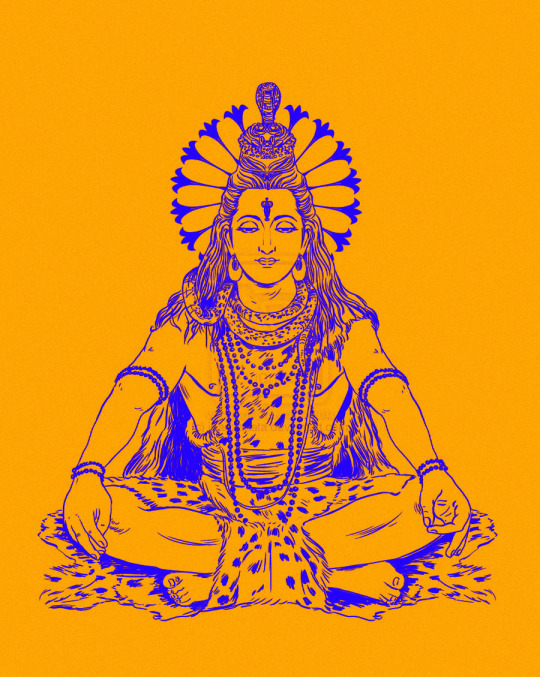
Om Namah Shivaya In Siddha Shaivism and Shaiva Siddhanta Shaivism traditions, Namah Shivaya is considered as Pancha Bodha Tatva of Lord Shiva and his universal oneness of five elements.Na – EarthMah – WaterShi – FireVa – AirYa – Sky or ether
12 notes
·
View notes